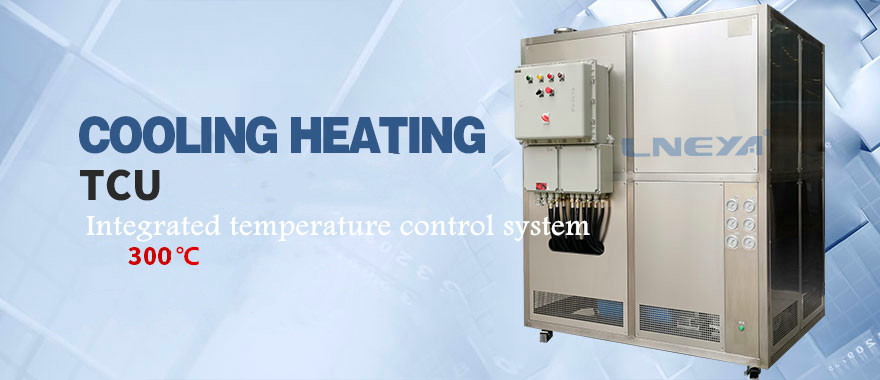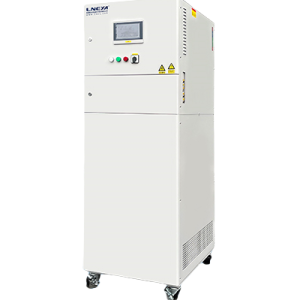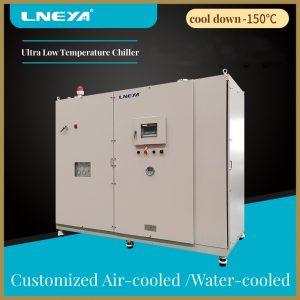Application of TCU in refrigeration and heating circulation system
In the process of pharmaceutical synthesis and fine chemical operation, we often encounter strong exothermic reactions such as oxidation reaction and acid-base neutralization. For these strong exothermic reactions, if the control is improper or the equipment is not powerful, it is easy to cause reliable accidents or Defects of low production efficiency. The refrigeration and heating cycle system TCU controls the process by controlling the oil temperature in the coil or the jacket, and is often referred to as a reactor jacket heating device.

In the process of continuous and stable exothermic reaction, it is necessary to continuously pass cooling water into the jacket of the reactor to cool down to barely maintain the balance of cooling and heating. The main reason for the overflowing pot or larger reliable accidents is that the heat exchange area per unit volume of the reactor is too small, and the simple jacket cooling is far from meeting the cooling energy requirement of the exothermic process.
The temperature in the reaction stage of the reactor is not a linear process. It is affected by various factors such as exothermic, endothermic, reaction rate, etc. Pure PID control cannot be controlled. It is very difficult to realize fully automatic control and needs to be established. The mathematical model adopts a special medical TCU refrigeration and heating cycle device for temperature control.
The medical refrigeration heating cycle system TCU realizes the temperature control of the reactor based on the predictive fuzzy self-tuning PID integrated control technology. The main idea is to use the predictive output of the system model, combined with the conventional PID control experience, and adopt the fuzzy inference method to perform the controller algorithm. Improve. Compared with the normal PID control scheme, the TCU of the medical refrigeration heating cycle system improves the robustness and adaptability of the system, and better solves the problem of temperature control of the reactor.
LNEYA refrigeration and heating circulation system TCU is also called high and low temperature circulation pump, heating and cooling integrated system, and TCU temperature control system, which is specially used for raising and lowering the temperature of the reactor. The liquid circulation of the entire system is airtight. The system is equipped with an expansion vessel, expansion vessel and liquid circulation type insulation. It does not participate in the liquid circulation, but is only a mechanical connection, regardless of whether the temperature of the liquid circulation is high or low. The medium in the expansion vessel is low At 60 degrees. There is no moisture absorption at low temperature, no oil mist is produced at high temperature, and the heat transfer oil has a wide working temperature. The TCU of the refrigeration and heating cycle system has better functions and is safe to use (the entire system oil circuit is driven by a circulating pump, and no pressure is generated during work), and the operation is more concise (refrigeration and pre-cooling one-key operation, and can be used directly after circulating the medium. ).
When choosing the refrigeration and heating temperature control system of the reactor, you must believe that you must use good accessories to produce excellent products. The refrigeration and heating accessories used in the TCU temperature control unit of the LNEYA refrigeration and heating cycle system are from the United States, France, Italy, Germany and other brands. Device.
LNEYA is a refrigeration and heating temperature control system for reactors from product design, component procurement, screening, production process, packaging and transportation, with sophisticated scientific management, stable product performance, convenient maintenance and Strive for good after-sales service to provide services for each user.
Raccomandazioni correlate
-
Dispositivi di raffreddamento e riscaldamento per essiccatori a singolo cono
748L'essiccatore a cono singolo è un'apparecchiatura per l'essiccazione di materiali solidi di uso comune, ampiamente utilizzata nell'industria chimica, farmaceutica, alimentare e in altri settori. Per garantire il controllo della temperatura durante il processo di essiccazione, è solitamente necessario equipaggiare ...
Visualizza i dettagli -
The Role of Chemical Refrigeration Temperature Control Unit
1069In pharmaceutical and chemical plants, the raw materials inside the reactors involved in industrial production require rapid cooling and cooling. In order to achieve this goal, the reactor undergoes direct refrigeration and cooling, thereby indi...
Visualizza i dettagli -
Qual è il principio di refrigerazione del sistema di refrigerazione a glicole?
1219Il sistema di refrigerazione a glicole, come si evince dal nome, consiste nell'utilizzare il glicole come agente refrigerante per il refrigeratore. Nell'ambiente a tutt'aria, a causa della bassa temperatura esterna, è impossibile utilizzare una torre di raffreddamento per l'alimentazione...
Visualizza i dettagli -
Closed cycle heating system temperature deviation description
891If the temperature deviation occurs in the closed cycle heating system during use, it is necessary to check to see if there is any problem in each link, and solve the problem in time. In the steady state, the closed loop heating system displays th...
Visualizza i dettagli
 Refrigeratori industriali LNEYA Produttore Fornitore
Refrigeratori industriali LNEYA Produttore Fornitore













